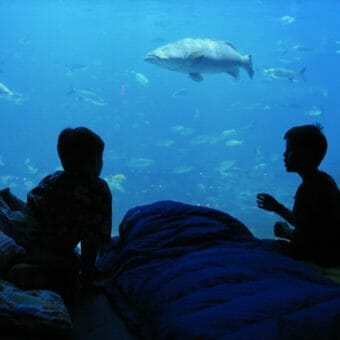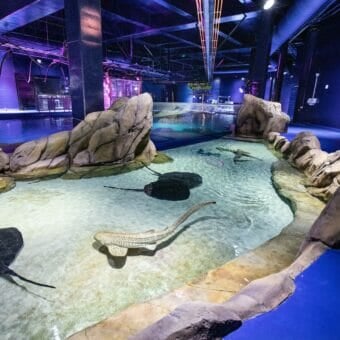-
Size
14-16 inches (36-41 cm) -
Diet
Crustaceans, mollusks, fish -
Range
Indo-Pacific -
Habitat
Sandy slopes
Physical Characteristics
- Has a whitish body densely-covered with small black spots. Three larger black spots are seen along the side of the body: one at the gill opening, one near the pectoral fin and another at the base of the tail.
- Juveniles are entirely black.
- Can grow to about 24 inches (61 cm) in length although individuals of 14-16 inches (36-41 cm) are more common.
- Body diameter to about 0.5 inches (1.3 cm).
Diet / Feeding
- Diet consists of zooplankton it picks from the current as it flows past. For this reason, all the eels in a colony generally face the same direction: into the current.
Range / Habitat
- Occurs in tropical Indo-Pacific waters from the Red Sea and East Africa to Japan, Australia and New Caledonia, and throughout Micronesia.
- Found along sandy slopes and bottoms at depths of 23 to164 feet (7-50 m) in areas of strong currents.
- Lives in a sandy burrow that it digs tail-first. The garden eel then coats the sand walls with mucus from its body to cement the sand grains together to prevent collapse.
Reproduction & Growth
- Males and females move burrows to increase proximity during mating season.
- Will stretch from adjacent burrows and intertwine bodies to spawn.
- The male will display protective behaviors toward his female mate, keeping other competitors away. It may bite rivals.
- Pelagic spawner: after mating, females will release fertilized eggs into the current.
- After the eggs hatch in the current, larvae continue to float until reaching a size threshold. At that point, the juvenile garden eel will dig its own burrow.
Conservation Status
- “Least Concern” on the IUCN Red List.
Additional Information
- Live in colonies of up to several hundred individuals each occupying its own burrow with approximately 15 organisms per square meter. Usually, the largest male lives in the center burrow.
- Most commonly seen with one-quarter of its body extended out of the burrow, swaying in the current like a blade of seagrass in order to feed on passing plankton.
- Easily disturbed and quickly retracts itself, tail first, into its burrow.
- Rarely leaves its sand burrow, even to spawn.
- Species discovered when SCUBA diving became popular.
Sources
- www.fishbase.org
- The Australian Museum
- Reef Fish Identification – Tropical Pacific. Allen, G.; Steene, R.; Humann, P. and Deloach, N., pg. 447
- Encyclopedia of Fishes, 2nd Edition; pg. 88
- http://sea.sheddaquarium.org






